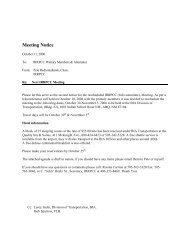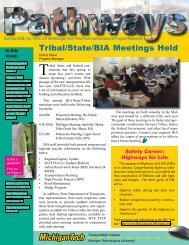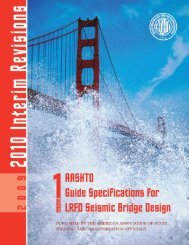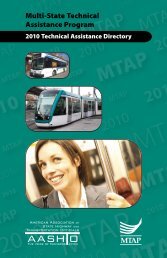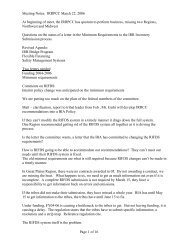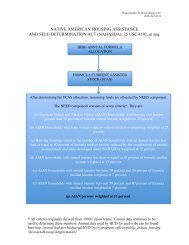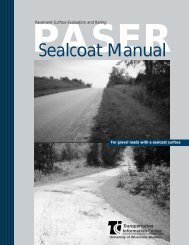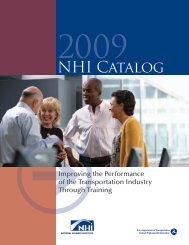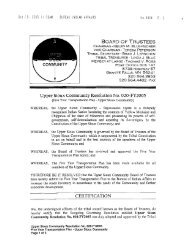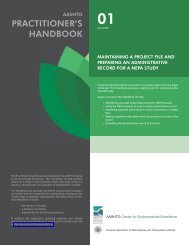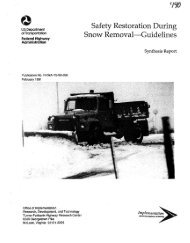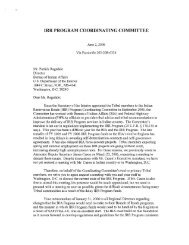Safety in Welding, Cutting, and Allied Processes
Safety in Welding, Cutting, and Allied Processes
Safety in Welding, Cutting, and Allied Processes
You also want an ePaper? Increase the reach of your titles
YUMPU automatically turns print PDFs into web optimized ePapers that Google loves.
ANSI Z49.1:1999<br />
expected current <strong>and</strong> duty cycles. Special attention shall<br />
be paid to the <strong>in</strong>sulation of cables used with equipment<br />
which <strong>in</strong>cludes high voltage, high frequency oscillators.<br />
11.3 Installation of Arc Weld<strong>in</strong>g Equipment<br />
11.3.1 Code Requirements. Installation <strong>in</strong>clud<strong>in</strong>g<br />
ground<strong>in</strong>g, necessary disconnects, fuses, <strong>and</strong> type of<br />
<strong>in</strong>com<strong>in</strong>g power l<strong>in</strong>es shall be <strong>in</strong> accordance with the<br />
requirements of the current ANSI/NFPA 70, National<br />
Electrical Code ¤ , <strong>and</strong> all local codes.<br />
11.3.2 The Work. The workpiece or metal upon which<br />
the welder welds shall be grounded <strong>in</strong>dependent of the<br />
weld<strong>in</strong>g leads to a good electrical ground unless a qualified<br />
person assures it is safe to work on an ungrounded<br />
workpiece.<br />
11.3.2.1 Ground<strong>in</strong>g. Ground<strong>in</strong>g shall be done by<br />
locat<strong>in</strong>g the work on a grounded metal floor or platen, or<br />
by connection to a grounded build<strong>in</strong>g frame or other satisfactory<br />
ground. Care shall be taken however, to avoid<br />
double ground<strong>in</strong>g; otherwise, the weld<strong>in</strong>g current may flow<br />
through a connection <strong>in</strong>tended only for safety ground<strong>in</strong>g<br />
<strong>and</strong> may be of a higher magnitude than the ground<strong>in</strong>g conductor<br />
can safely carry.<br />
E11.3.2 When the work term<strong>in</strong>al is grounded, care<br />
should be taken to see that the workpiece is not separately<br />
grounded. Refer to 11.3.2.1. Before weld<strong>in</strong>g is attempted<br />
the operator should check to be sure that the worklead is<br />
properly connected. This will elim<strong>in</strong>ate the chance of weld<strong>in</strong>g<br />
current be<strong>in</strong>g misdirected <strong>in</strong>to the ground<strong>in</strong>g conductor<br />
system of other equipment. Misdirected weld<strong>in</strong>g current<br />
can damage conductors which do not have adequate<br />
ampacity.<br />
E11.3.2.1 The work lead <strong>and</strong> work lead clamp are<br />
sometimes <strong>in</strong>correctly referred to as ground lead <strong>and</strong><br />
ground clamp. The work lead <strong>and</strong> the ground lead are<br />
not the same. The work lead should not be referred to as<br />
the ground<strong>in</strong>g lead. It is preferable to connect the work<br />
lead directly to the work. Hence, it is <strong>in</strong>appropriate to refer<br />
to the lead as ground lead or the connection as<br />
ground clamp. The work clamp should never be stored<br />
by clamp<strong>in</strong>g it to any part of the grounded power source<br />
frame. Ground<strong>in</strong>g of electrical systems <strong>and</strong> circuit conductors<br />
is done to limit voltages due to lightn<strong>in</strong>g, l<strong>in</strong>e voltage<br />
surges, or un<strong>in</strong>tentional contact with higher voltage<br />
l<strong>in</strong>es, <strong>and</strong> to stabilize voltage to ground dur<strong>in</strong>g normal<br />
operations.<br />
It also facilitates overcurrent device operation <strong>in</strong> case<br />
of ground faults. (See ANSI/NFPA 70, National Electrical<br />
Code ¤ , Section 250-1, f<strong>in</strong>e pr<strong>in</strong>t note No. 1.) Ground<strong>in</strong>g<br />
of workpieces, equipment hous<strong>in</strong>gs, metal cab<strong>in</strong>ets <strong>and</strong><br />
frames, or other conductive material that form part of the<br />
equipment is done to limit the voltage to ground on these<br />
items. Limit<strong>in</strong>g the voltage by ground<strong>in</strong>g helps to prevent<br />
accidental shocks when equipment is misconnected or <strong>in</strong>sulation<br />
fails. (See ANSI/NFPA 70, National Electrical<br />
Code ¤ , Section 250-1, f<strong>in</strong>e pr<strong>in</strong>t note No. 2.)<br />
Equipment used with ungrounded supply systems, such<br />
as is used <strong>in</strong> naval shipboard systems, should be connected<br />
<strong>in</strong> accordance with the requirements of the authority hav<strong>in</strong>g<br />
jurisdiction.<br />
Special radio frequency ground<strong>in</strong>g may be advisable<br />
for equipment us<strong>in</strong>g high-frequency arc stabilizers. (See<br />
Recommended Installation <strong>and</strong> Test Procedures for High<br />
Frequency Stabilized Arc Welders, 1970, Arc Weld<strong>in</strong>g<br />
Section of NEMA.)<br />
33



